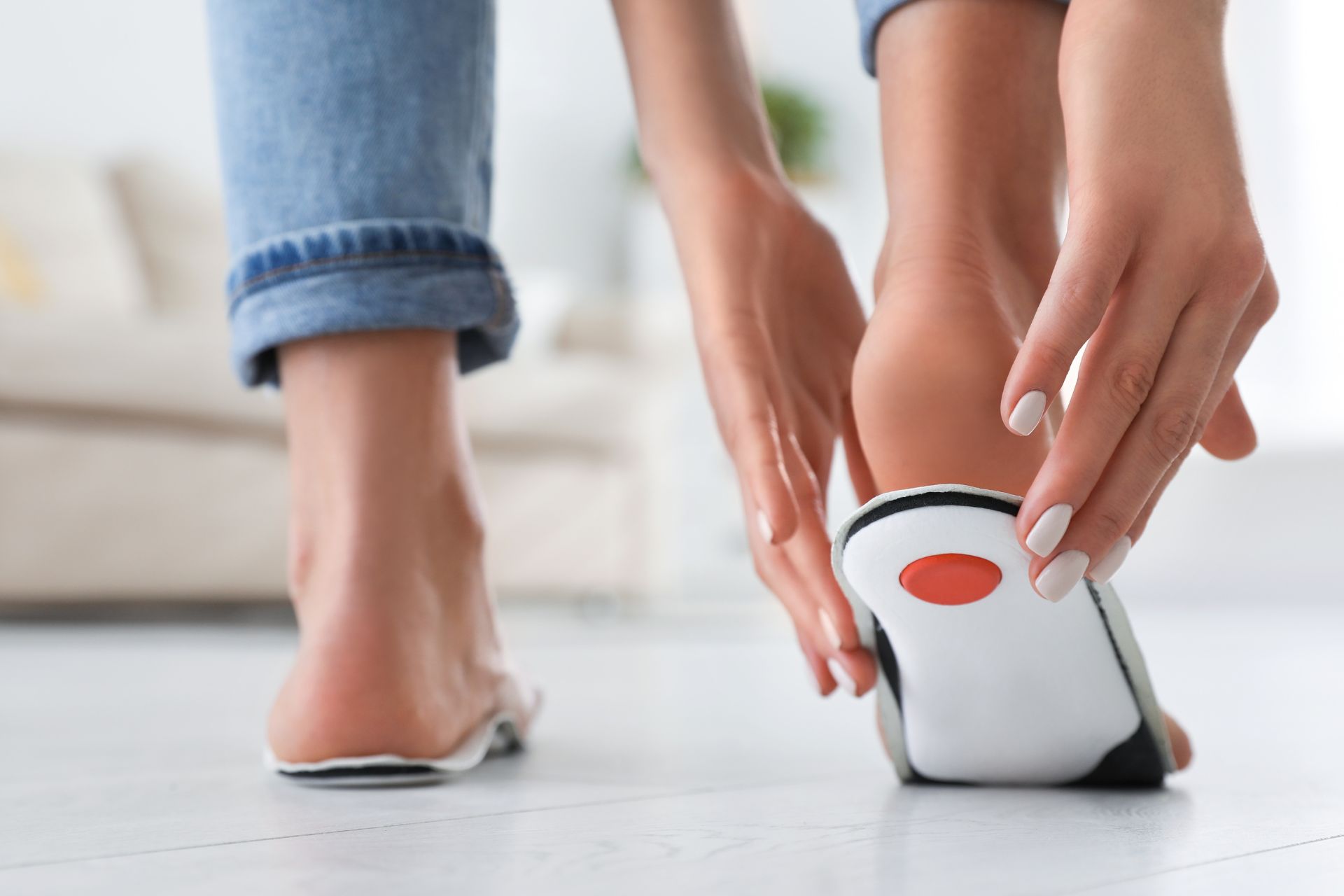For those suffering from Morton’s neuroma, the quest for relief can be fraught with frustration and discomfort. This foot condition is characterised by thickening the tissue around one of the nerves leading to the toes. It is so common it’s found in 1 in 3 people, asymptomatic or otherwise. If symptomatic, it often manifests as a sharp, burning pain in the ball of the foot. While various treatment options exist, from conservative measures to surgical interventions, the role of Morton’s neuroma orthoses in managing this condition is becoming increasingly recognised as an important intervention strategy.
Morton’s neuroma, at its core, is about pressure and mechanical imbalance. Findings from in-depth gait analyses consistently reveal that excessive forefoot stress and pressure significantly contribute to the development and persistence of Morton’s neuroma. This revelation shifts our understanding of the condition from a mere localised irritation to a symptom of broader biomechanical issues within the foot.
Traditional treatments for Morton’s neuroma have often focused on addressing the neuroma itself. Open surgery, cryosurgery, and radiofrequency ablation are among the more invasive options that directly target the affected nerve. While these approaches can provide relief, they share a common limitation: they don’t always address the underlying cause that led to the neuroma’s development in the first place. This oversight can lead to recurrence or new issues in adjacent areas of the foot.

Orthoses for Morton’s Neuroma
Morton’s neuroma is a complicated affliction that has been primarily treated with invasive strategies, addressing symptoms without understanding the cause. Enter Morton’s neuroma orthotics — devices designed to correct mechanical imbalances in the foot that other methods can’t resolve. Orthoses can normalise forefoot pressures and can be a crucial element in managing and preventing Morton’s neuroma. However, not all orthoses are created equal, and the key to their effectiveness lies in proper design and application.
When we talk about Morton’s neuroma insoles, we mean custom orthotics for Morton’s neuroma that are tailored to the individual’s foot structure and gait pattern. The process begins with a comprehensive gait analysis, which provides invaluable insights into how an individual’s foot functions during walking and running. This analysis often reveals patterns of excessive pressure or abnormal motion that contribute to the development of Morton’s neuroma.
With this information, podiatrists and orthotic specialists can design devices that redistribute pressure away from the affected area, support the arch, and promote a more balanced gait. Some patients may find sufficient support with over-the-counter insoles. However, for many, custom orthotics for Morton’s neuroma offer precision and effectiveness that generic solutions cannot match.
What Are the Best Insoles for Morton’s Neuroma
The best insoles for Morton’s neuroma address the specific biomechanical issues identified through gait analysis that cause Morton’s neuroma. They might feature metatarsal pads to spread the metatarsal bones, reduce pressure on the nerve or have a slight depression under the affected area to alleviate direct pressure. Some orthoses are designed with materials that offer both cushioning and support, striking a balance between comfort and correction. The effectiveness of Morton’s neuroma orthotics can vary from patient to patient. Finding the right fit often requires adjustment and refinement. This personalised approach underscores the importance of working closely with a healthcare professional specialising in foot biomechanics and orthotic therapy.

Orthoses should be considered part of a comprehensive plan rather than a standalone solution. They work best with conservative measures such as proper footwear selection, physical therapy, and activity modification. In some cases, temporary use of orthoses may be sufficient to allow the irritated nerve to heal, while in others, long-term use may be necessary to prevent recurrence.
The integration of orthoses into managing Morton’s neuroma represents a shift towards addressing the root causes of the condition rather than just its symptoms. By normalising forefoot pressures and correcting mechanical imbalances, orthoses can provide relief where other treatments have failed. They offer a non-invasive alternative for patients who are hesitant about surgical interventions or for whom surgery is not appropriate.
Furthermore, using orthoses to manage Morton’s neuroma aligns with a growing trend in podiatric medicine towards preventive care and biomechanical optimisation. By identifying and correcting abnormal foot mechanics before they lead to significant problems, healthcare providers can help patients avoid the pain and disability associated with conditions like Morton’s neuroma.
1,000 Pressure Sensor Benefits Addresses Gait Patterns
We will likely see even more sophisticated approaches to orthotic design and application. Advanced manufacturing techniques like 3D printing at The Foot Practice Orthoses Lab are already allowing for creating highly customised orthoses that precisely match the contours of an individual’s foot. Similarly, integrating sensor technology, like The Foot Practice’s RehaWalk® Gait System, into orthoses promises to provide real-time data on foot pressures and gait patterns, allowing for even more precise interventions.

While managing Morton’s neuroma can be challenging, the role of orthoses should not be underestimated. By addressing the underlying biomechanical issues, orthoses offer a pathway to long-term relief and improved foot function. As with any medical intervention, the key lies in proper assessment, customisation, and ongoing management.
For those suffering from Morton’s neuroma, exploring orthotic options with a qualified healthcare professional could be a crucial step towards finding relief. Whether custom orthotics or carefully selected over-the-counter insoles, these devices can significantly improve the management of this painful condition.
If you’re experiencing sharp, burning pain in the ball of your foot, make an appointment at The Foot Practice today to learn how orthoses can help manage your Morton’s neuroma pain.






